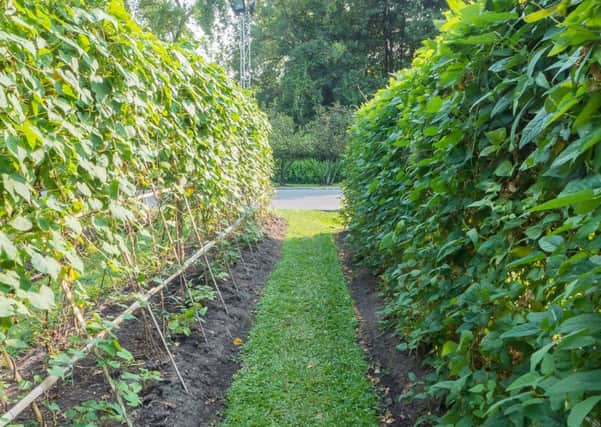Jenny Mollison: Hedge your bets to keep buffeting winds at bay


When the gale abated, the bean plants had survived but the foliage was scorched. I was surprised at how long it was before they had recovered enough to continue cropping. Even rows of dwarf French beans were flattened. Others found sweetcorn and artichokes snapped off. Some shed roofs needed repairs.
Exposure to the elements is a problem often faced by new allotment sites and it pays to look at ways of minimising the impact. Way back in 1862 Osgood Mackenzie was planning his new garden on the west coast at Inverewe in Wester Ross. The odds were stacked against him. The wind howled and the soil was poor. Walls are good and provide ideal locations for trained fruit but trees and hedges work wonders in reducing the severity of strong winds. Mackenzie began by planting willows and then pines until eventually they created a microclimate suitable for growing ornamental plants. Quite apart from all the acid-loving plants, any allotment gardener cannot fail to be impressed by the range of fruit and vegetables flourishing there today in the most unlikely of locations.
Advertisement
Hide AdAdvertisement
Hide AdI’ve recently been to the far north-east. While the wind isn’t often as strong as on the west coast, it can whistle across the flat Flow Country causing just as much devastation. I didn’t find any allotments in Thurso. However, there was plenty to learn about fruit and vegetable gardening in exposed locations at the Castle of Mey, close to John O’Groats.
Here the walled garden is separated into sections, like allotment plots, by 2m high mixed hedges of hardy native plants such as elder, hawthorn, and currants. A stunning range of vegetables thrived in these plots. I made a careful note of what was growing. There were plenty of brassicas, leafy spinach and chard, root vegetables, peas and broad beans.
There was nothing which grew above the height of the hedges. I was particularly impressed with a semi-leafless pea, variety Ruthless, which had a tangled mat of tendrils, helping it to hang on in strong winds. n